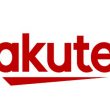With technology, more is better
No single wireless technology is the best in all circumstances, which is why an alphabet soup of protocols and standards exists, each designed to address trade-offs regarding coverage footprints, data-rate throughputs, spectrum availability, frequency-propagation characteristics and access to backhaul routes. These trade-offs have forced network administrators and users to make unwanted choices, leaving them tied to wireless technologies that may be ill-equipped to serve their needs in a given situation or environment.
New Jersey-based startup Attila Technologies believes it can help ease this dilemma with its adaptive-radio software solution that is designed to leverage the benefits of all wireless technologies to give users unprecedented reliability, coverage, security and data throughput. Instead of selecting a single wireless network to transmit data packets, the Attila solution uses available bandwidth from all available wireless networks to ensure the fastest possible transmission.
“It looks at what your communications need is and looks at all the available networks, and it breaks up what you have into pieces that make use of all the available networks,” said Helena Wisniewski, Attila chairman and vice president of research and enterprise development at the Stevens Institute of Technology, where the Attila software was developed. “It will take your transmission and send it simultaneously over each one of those networks.”
At the heart of the solution is a technology called dynamic polymorphic capacity concatenation (DPCC), which lets Attila’s multinetwork communicator (MNC) assess the wireless environment, send data packets over the available networks using the most efficient route and reassemble the packets at the target location, Attila CEO Frank Ianna said.
“Let’s say you’re in one point and I’m in another point, and we’re using Attila capabilities over four networks,” Ianna said. “You may be at a point where you can see — and get good transmission from — networks A, B and D. I may be at a point where I can use A, B, C and D. Obviously, sending anything to you over C isn’t going to help, so we’re only going to use A, B and D.
“The minute you get to a point where you say, ‘Hey, I’ve got some C capacity now,’ we can spread it over that network, too, so it will change in real time.”
There are several benefits to such a system. While no single wireless network provides 100% coverage in all locations, there are relatively few areas in developed countries where no wireless coverage — be it cellular service, a Wi-Fi network, a private wireless system or even a satellite signal — is available. In addition to expanded coverage, the fact that Attila technology uses multiple wireless networks greatly enhances reliability in areas where multiple networks provide coverage, Ianna said.
“If the probability of failure in one network was one-100th, the probability of failure of five networks is one-100th to the fifth,” he said. “So you have what I call an exponential improvement in reliability, and reliability is nothing more than the availability of the signal.”
This greater reliability does not come at the expense of data-rate throughput. In fact, throughput is enhanced because the software uses bandwidth from each of the available networks, Ianna said. As a result, three 1 MB/s wireless pipes allow a 3 MB/s transmission, minus the 3-7% overhead loss from the software.
Meanwhile, transmitting data packets across multiple networks is inherently more secure than sending them over a single network, where the entire signal can be captured and analyzed by a hacker, he said.
“Even without encryption, if somebody is picking up one of those signals and you’re operating over four networks, they’ve got to get all four networks and figure out how you’re spreading the signal across all four, so you have immediate security built in,” Ianna said. “If you want more on top of that and you encrypt, I don’t think anybody could pick up that signal.”
Finally, because the Attila solution will work with any wireless technology that supports an IP data stream, it inherently provides interoperability — a key point for the homeland-security and first-responder markets, where Attila is focusing its initial efforts.
“Some of the solutions that are out there require some hardware infrastructure to be built,” Wisniewski said. “This makes use of the existing infrastructures that are available, which is a more cost-effective solution.”
However, factors currently exist that could limit the technology’s effectiveness, including the amount of distance needed between antennas to alleviate interference, particularly if one of the antennas provides a satellite link, Ianna said.
But the size of handset antennas needed to establish a satellite link could shrink significantly in a few years, when Mobile Satellite Ventures launches its next-generation satellites built by Boeing, said Jim Corry, MSV’s vice president of government solutions.
“The less antenna you have in space, the more antenna you need on the ground; and the more antenna you have in space, the less antenna you need on the ground,” Corry said. “These [satellite] antennas are going to be so huge that I’m going to be able to give you a satellite phone that will be the size of cell phone.”
Attila’s current prototype is about the size of a DVD player — 18 inches by 12 inches, and 4 inches high — and features four modems, a power supply and a GPS chip, as well as outputs to separate antennas. While this is fine for mobile, in-vehicle use, Attila eventually hopes to reduce the package to a chip that can be included in a handheld device, Wisniewski said.
After receiving a “Best Product” award for outstanding networking software at the 2006 Federal Office Systems Exposition, Attila this summer received a $100,000 grant from the New Jersey Commission on Science and Technology. The company now is conducting tests in cooperation with the U.S. Department of Homeland Security.
Commercialization of the product could be finished within a year, as internal tests indicate the Attila technology is well-suited for mission-critical communications, Wisniewski said.
“One of the things we wanted to test is whether it would work when there’s congested airways, because in an emergency situation, that’s something that would be an effect, and you want to make sure that you have a continuous broadband communication,” she said. “We’re able to transmit video feeds in real time, and we’ve tested that.”
Attila officials are confident about the capabilities and value their software provides, but there is uncertainty surrounding the business plan. While the ability to access any working wireless network is an attractive notion for mission-critical communications, paying to maintain a connection to multiple networks — for instance, the four nationwide wireless carriers and a local Wi-Fi network — likely would be cost-prohibitive for budget-minded public-safety agencies under the current paradigm, where per-minute and per-megabit rates are the norm.
“It’s an interesting twist, because I guess what they’re saying is they can balance the load across a multiplicity of networks,” said Andrew Seybold, a wireless analyst. “[But] I can’t see the first-responder community signing up for two or three different wide-area networks. … I suppose somebody could aggregate services and sell that.”
Unless the business-model issues can be addressed effectively, Attila faces the danger of being “an invention that’s looking for something to do,” Seybold said.
Ianna understands the problem from the user perspective and — as the former president of network services for AT&T — from the side of carriers, which might fear that Attila’s technology could commoditize their networks into raw-capacity pipes. With a strong wholesaling agreement with other wireless service providers, Ianna believes a compelling business model can be established.
“I have two ways to go here,” Ianna said. “One is to say I’m going to continue to pursue the technology with the chance of licensing the technology to someone who would want to become an MVNO [mobile virtual network operator], or get one or more of the carriers to say, ‘Hey, we could serve this [mission-critical] market, and this would be a great idea.’”
Despite its initial push to the homeland-security and first-responder markets, Ianna said that Attila eventually hopes to use the technology in commercial settings — most likely, to Internet-enable consumer vehicles.
“Imagine if you could push out a 1.5 Mb/s upstream from a mobile vehicle,” he said. “A lot of carriers will tell you that you’re going to get all that as we go to 4G. But quite frankly, you’re not going to get all the things we’re talking about in terms of the persistency, the reliability, the security and the interoperability. … That’s why I think the Attila technology is causing people to say, ‘Wow, that’s really interesting.’”

















